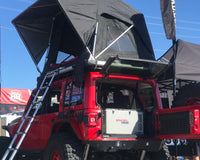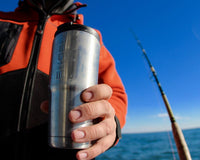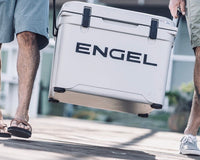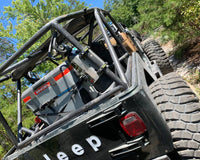According to the 2019 North American Camping Report, over 7.2 million households have begun camping in the past five years. This has seen the total number of camping households increase to highs of 78.8 million.
One of the key factors driving the increase in the number of campers is millennials starting their families and taking them for hikes. Camping is a great way to build and strengthen relationships while getting some fresh air and exercise.
When camping, there are several essentials to consider. For shelter, you can use tents which are chosen by 53% of new campers or cabins and RVs which are selected by 25% and 19% of new campers respectively.
Another critical thing to carry, especially if you are going to spend time away from your campsite, is a cooler. In this regard, you have two main options; these are soft-sided coolers and hard-sided coolers.
Though they both do the same job, each type is suitable for particular circumstances. As such, your choice should be guided by your specific need for the cooler.
Soft Side Coolers
Soft side coolers are a type of cooler that is not made of hard plastic. Their versatility makes them perfect for daily use. Whether it's for the gym, golf course, or for a hiking excursion during your camping trip, soft-sided coolers are ideal.
Here are some of the unique features of soft-sided coolers:
Light Weight
The exterior of these coolers is made of vinyl or fabric, which is lighter in comparison with the rotomolded plastic used to make hard-sided coolers. When it comes to size, they are small, and what you pack inside will make most of the weight.
Portability
The last thing you want to do when hiking or enjoying the great outdoors is to bring with you anything that limits your mobility. In this regard, small-sided coolers are perfect as their small size and lightweight nature make them highly portable.
With a hard cooler, you will need a vehicle or other form of long-distance transportation to get it to your campsite. On the other hand, soft-sided coolers come with shoulder straps that allow you to carry them anywhere you go like a backpack or rucksack.
Storage
Unlike hard coolers, which are rigid, these coolers are easily collapsible. As such, you do not need a large space to store soft-sided coolers. You can just roll it up and pack it somewhere else when it's empty.
Hard-sided Coolers
On the other side of the spectrum are hard-sided coolers. These are for adventurers on long trips or visiting rugged environments.
Here’s how they are suitable for such trips:
Better Ice Retention
The primary purpose of a cooler is to keep your refreshments cool and good for use for longer. Ice retention refers to the amount of time a cooler can retain ice before it melts. Whereas a soft-sided cooler can retain ice from anywhere between 2-4 days, a hard-sided cooler can last over a week.
Capacity
Hard-sided coolers are significantly larger than their softer counterparts. As such, they can carry more drinks and can also be used to pack food. With a hard cooler, you can pack enough food and drinks to last you a few days.
Durability
The rotomolded plastic used to make hard-sided coolers, which makes them rigid, also makes the coolers more durable than soft side coolers. Therefore, if you go camping frequently and love to test yourself in the depths of nature, a hard-sided cooler is a suitable option.
In Conclusion
When it comes to choosing a suitable cooler for your trip, it's more about what you want to do than the coolers themselves. This requires you to plan your camping trip and all the activities you will do.
Realistically, you will probably need both a hard-sided cooler to keep your food and drinks cold and fresh at the campsite and soft side coolers for when you explore the area around you.
Going Camping? Here’s What You Need to Know When Choosing a Cooler






